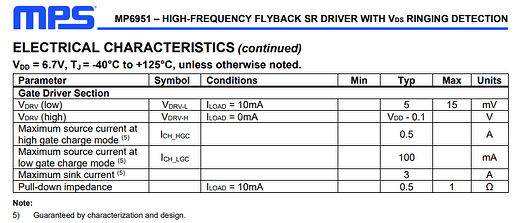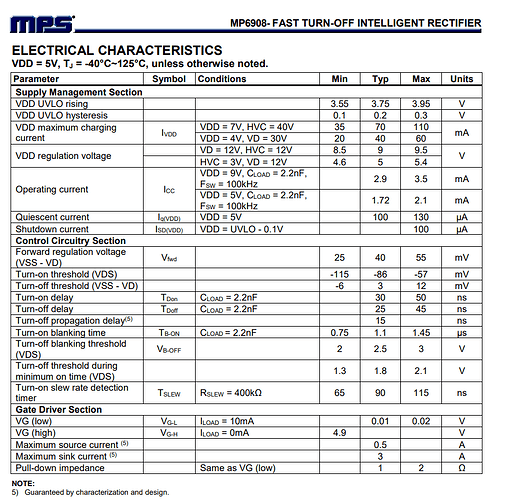Dear MPSer,
I would like to confirm the detection mechanisms of the MP6908 and MP6951:
- The MP6951 uses a voltage threshold (VP) generated based on the peak drain voltage, where the turn-on logic is enabled when tP > tW. In contrast, the MP6908 relies on the falling slope of the drain-source voltage (from 2V to -86mV).
- Does the peak drain voltage of the MP6951 have a limitation related to the turns ratio (N)?
- Is there a comparison table of the relevant electrical characteristics?
Hello,
I will answer your questions in the order that you have asked them:
- Your understanding of the turn-on mechanisms for the MP6951 and the MP6908 are correct.
- The MP6951 enables turn-on logic when the voltage time “tp” exceeds the width of the resonant cycle timing “tw”. This mechanism is tied to the detection of the peak voltage, which takes into account of the transformer’s resonant behavior from parasitics.
- The MP6908 monitors the falling slope of the drain-source voltage and identifies the transition from 2V to -86mV (or a similar range) to determine when the secondary side conducts.
-
For your question regarding the MP6951, the datasheet mentions that peak to drain voltage is proportional to the reflected voltage from the primary transformer winding as this is influenced by the turns ratio (N). If N is too high, then the primary reflected voltage may exceed the operating range or internal threshold ratings, causing improper timing or at worst damage to the IC. Take much care in the consideration for your turns ratio design as well as having a predictable range for the reflected primary voltage that will be taken into account for your design.
-
There is no specific table showing this. I would suggest studying both datasheets, seeing the differences, and then evaluate which one would work best for your end application. For your convenience, here they are shown below:
I hope this response has answered all your questions.
Best,
Krishan


